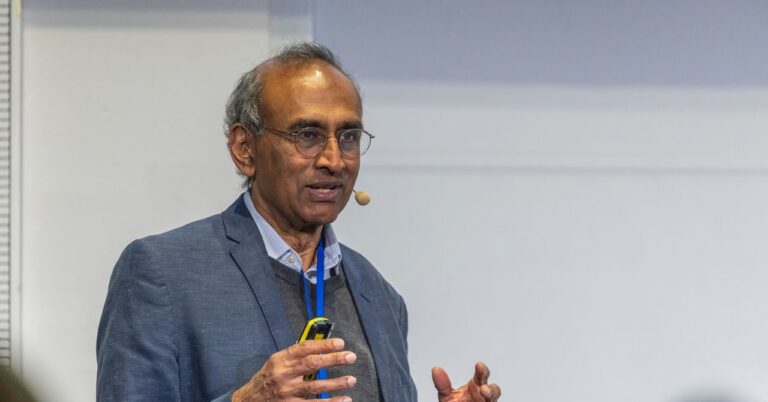Venkatraman Ramakrishnan, The man of death. While this doesn’t sound like a good moniker, Ramakrishnan is one of the world’s most prominent scientists in the field of structural biology and cellular processes associated with aging and death. He received the Nobel Prize in chemistry in 2009 for discovering the structure of the ribosome, an important cellular machine responsible for gene expression.
In addition to being a major researcher, Ramakrishnan is also a prolific author. After a great success Genetic MachineMemoirs about his journey of man and science, he published the mighty Why do we die?as its name suggests, the book is described precisely to show dynamics that regulate aging and gradually lead to merciless death.
Ramakrishnan was recently in Italy in Milan. There, he lectured at the second edition of the Milan Lifespan Summit, the most important Italian event specializing in longevity and psychophysical well-being organized by Brecircle Italia. It was an opportunity to meet him and ask him a few questions. This interview has been compiled for clarity and length.
Wired: Professor Ramakrishnan, the important questions in your book are Why do we die?. But what exactly is death?
Venki Ramakrishnan: Death refers to the irreversible loss of the ability to function as a consistent individual. This is the result of a breakdown of a critical system or device, such as the heart, brain, lungs, or renal failure. In this sense there is a clear paradox. When our whole organism is alive, millions of cells within us are constantly dying, and we don’t even understand that. Meanwhile, at the time of death, most of our bodies’ cells are still alive, and the entire organ is still functional, and we can donate to people who need transplants. However, at that point, the body lost its ability to function as a whole. Therefore, in this sense it is important to distinguish between cell death and death in an individual.
Speaking of death and aging, you say in your latest book, “I wanted to objectively see the current understanding of two phenomena.” What was the greatest surprise or most deeply believed belief that I had to reconsider while writing and studying this work?
In fact, there were some surprises. One is death, contrary to what you might think death is not programmed by our genes. Evolution doesn’t care how long we live, but simply chooses the ability to pass genes, a process known as “fitness” in evolutionary biology. Therefore, selected traits are traits that help to survive and replicate childhood. And it is these traits later in life that cause aging and decline.
Another strange discovery was the fact that aging was not merely due to cell wear. Wearing occurs constantly in all living things, but species of species have very different life spans. Instead, lifespan is the result of a balance between the expenditure of the resources needed to make an organism work and repair it, and the expenditure of the resources needed to grow, mature, replicate and keep it healthy until it grows, matures, and grows.


